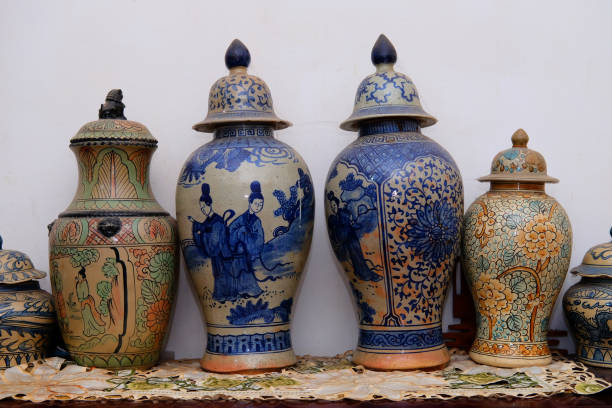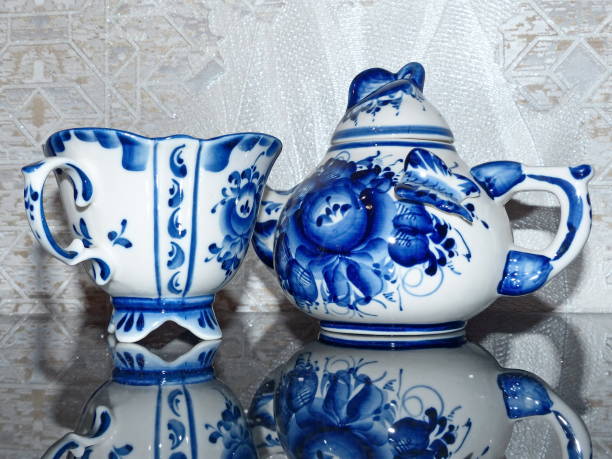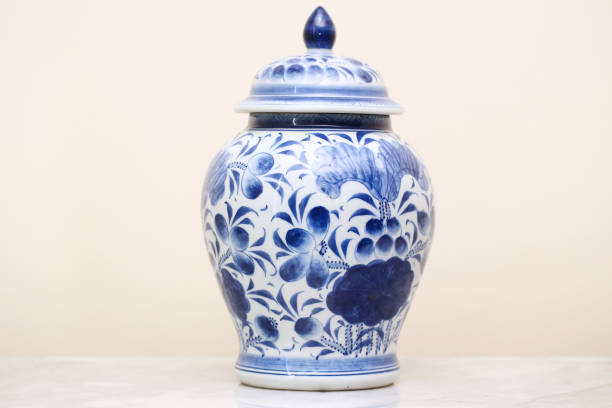Blue and White Vases Enhance Home Decor Seasonally
Home decor lovers have long loved blue and white ginger jars and vases for their versatility and timeless beauty. These Chinese porcelain items are now staples in households seeking beauty and history. Crisp blue on a white background promotes tranquility and cleanliness and creates a magnificent contrast that may suit any environment. They can anchor vibrant interior designs year-round because blue and white vases are adaptable to seasonal décor changes.

These vases can be recycled and restyled to match shifting themes and temperatures between spring and winter. In spring, daffodils and tulips look great in blue and white vases. The vibrant flowers against the peaceful blue patterns create a lively yet refined scene for rejuvenation and growth. These vases on windowsills or dining table centerpieces may brighten areas and bring the outside in.
Blue and white vases shimmer in summer’s heat and daylight. This season requires lighter, airier arrangements. Fill these vases with greenery and wildflowers to mimic the expanse of summer meadows. Hydrangeas’ luxuriant flowers contrast with the vases’ complex patterns. Pair them with nautical-inspired decor like ropes, shells, and driftwood for a summery, seaside vibe.
Autumn decor might be more muted to represent the cooler temperatures and shorter days. Dried leaves, branches, and autumn flowers like chrysanthemums and marigolds can be displayed in blue and white vases. The decaying elements and vivid blue can create a profound feeling of beauty in decay, matching the seasonal cycle. Burlap, cinnamon sticks, and pumpkin decorations around these vases can provide fall charm and prepare homes for the chill.
Winter décor is about creating a cozy, inviting ambiance to combat the cold and gloom. Winter’s frosty beauty can be reflected in blue and white vases with evergreen sprigs, holly berries, or artificially snowed branches. The cool winter colors can be brought within without the chill with the blue patterns on white porcelain. These vases create a peaceful atmosphere for long winter nights in reading nooks or near fireplaces.
Lighting is essential year-round for displaying these blue and white vases. In warmer months, natural light can accentuate the porcelain’s shine and texture, while in darker months, soft LED spots or fairy lights can dramatize the vases’ patterns and shadows.
These vases allow creatives to DIY or customize seasonal decor. One may paint seasonal themes on temporary clings that can be placed and removed from vases to provide a personal touch. This adds a new dimension to the design and allows a personal connection to the seasons through these timeless objects.
Thus, blue and white vases are helpful for a room’s floral display and style anchors year-round. Their classic color scheme and graceful form bridge the gap between changing tastes and seasonal décor trends, making them a worthwhile investment for any home decorator or decor enthusiast wishing to add beauty and versatility to their living space beyond seasonal changes.
Blue Shade Blending in Home Decor: Harmonizing Hues
Blue and white vases, especially ginger jars, are flexible and stunning home design components. With their crisp blue designs on white porcelain, these vases reflect centuries-old traditions and modern aesthetics. Such items can add depth and dynamism to a home by using different colors of blue. Each method of artfully mixing blues adds its flavor and influence to interiors.
Understanding the qualities of blue colors and how they interact with other room elements is crucial to combining them. Lighter blues, for instance, provide a tranquil, airy mood. Darker blues, with their depth and richness, convey elegance and sophistication. These effects can be enhanced by utilizing blue and white vases as focal points or complementing pieces that match the color motif.
Color temperature is critical when decorating with multiple blue tones. More excellent blues with green or purple undertones look great with other cool blues, giving a cohesive, deliberate appearance. Warm blues with red or yellow undertones provide a bright hue that stimulates the senses. A blue and white vase can connect these tones, and its delicate designs provide a visual break to savor the difference.
Color perception also depends on texture. A glossy, smooth blue vase may reflect light differently than a matte, textured one of the same color. Playing with textures may spice up your design. Place a soft, polished ginger jar next to a rough, fabric-like blue blanket to highlight color and material contrasts, making the area more enjoyable and tactile.
Color spatial distribution is another factor. In bigger spaces, using varying hues of blue in rugs, couches, art, and vases can create focal points that guide the viewer’s eye. This method may make large spaces feel cozy and organized. Lighter blues make the space more prominent in smaller areas, while deeper blues provide depth and concentration.
Room illumination significantly affects color perception. Place a blue and white vase in the sun to show off its elegance and blue tones. However, artificial illumination can enhance or dull colors. Warm lighting makes blue tones richer, whereas cool lights make them brighter. Changing lighting sources can significantly affect how your blue decor is seen.
Using blue in seasonal decor is another fun way to experiment. Like the sky and sea, lighter, brighter blues give spring and summer a fresh, breezy sense. A vase in these tones can be adorned with seasonal flowers or greenery to represent nature. Deeper blues, especially when mixed with rich textures like wool or velvet and seasonal decor like twinkling lights or soft blankets, may warm up spaces in winter.
Personalizing blue and white vases can be a gratifying effort for decorators. To match one’s style or decor trends, add ribbons, paint designs, or fill them with colored glass or stones. Customization personalizes the room and makes these vases unique.
In conclusion, using vases and other decorative items to merge blue tones can make a home lively and visually appealing. The shades of blue may elicit different emotions and styles, making them practical interior design tools. By considering color temperature, texture, spatial distribution, and lighting, one may master blue decorating and create beautiful, harmonious places that represent one’s taste and style.




